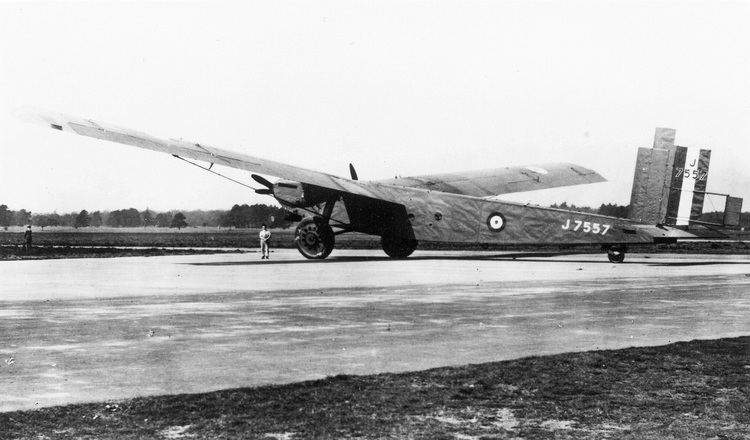Top speed 175 km/h Length 23 m Retired 1930 | Wingspan 48 m Introduced 1928 First flight 1928 | |
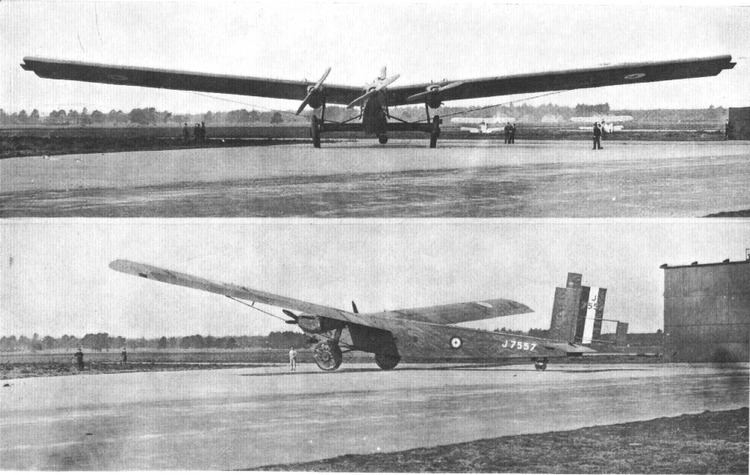 | ||
Manufacturer William Beard and Company | ||
Beardmore inflexible
The Beardmore Inflexible, also known as the Rohrbach Ro VI, was a three-engined all-metal prototype bomber aircraft built by William Beardmore and Company at Dalmuir, Scotland.
Contents
- Beardmore inflexible
- Beardmore inflexible rc plane aerial footage taken from a dji quadcopter
- Design and development
- Operators
- Specifications
- References

Beardmore inflexible rc plane aerial footage taken from a dji quadcopter
Design and development
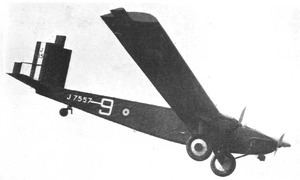
William Beardmore and Company had acquired a licence for the use of the Rohrbach principle for stressed-skin construction. Using these principles and drawings supplied by Rohrbach for the RoVI, the Beardmore company designed, what was then a massive all-metal three-engined transport, the Beardmore Inflexible.
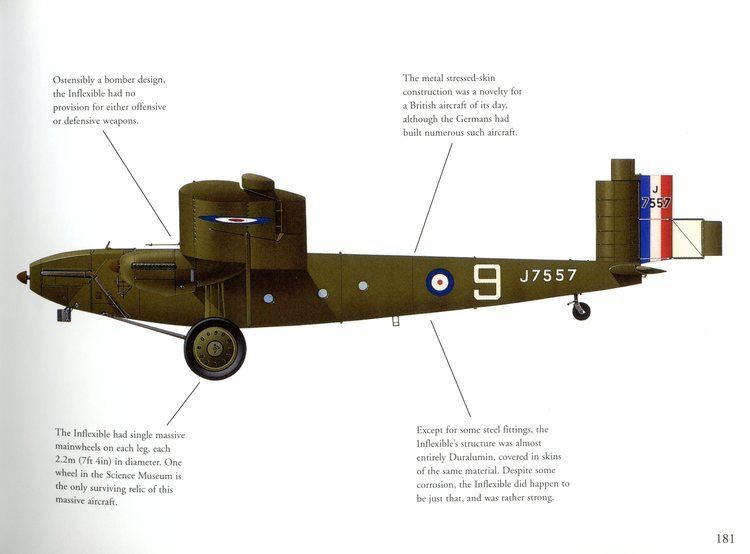
The aircraft (Serial Number J7557) was built in sections at Dalmuir between 1925 and 1927 and these were sent by sea to Felixstowe and from there delivered by road to the Aeroplane & Armament Experimental Establishment (A&AEE) at Martlesham Heath Airfield where it first flew on 5 March 1928, appearing at the Hendon RAF Display later in the year. The aircraft was structurally advanced for its time and had good flying qualities. It was also a very large aircraft for the time, having a wingspan of 157 feet (48 m) - around 16 feet (4.9 m) greater than the Boeing B-29 Superfortress heavy bomber of World War II. However, with an all up weight of 37,000 pounds (17,000 kg). it suffered from being underpowered and, with no interest in production, the aircraft was dismantled at Martlesham Heath in 1930. It was then used to investigate the effects of corrosion on light-alloy stressed skin structures.
One of the aircraft's wheels survives, and is an exhibit in the Science Museum, London.
Operators
Specifications
Data from Air Enthusiast International
General characteristics
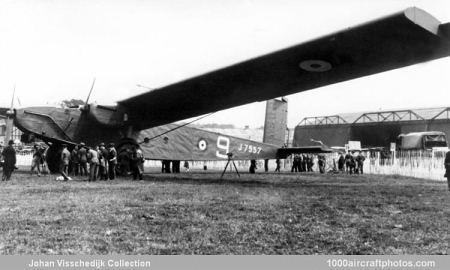
Performance
